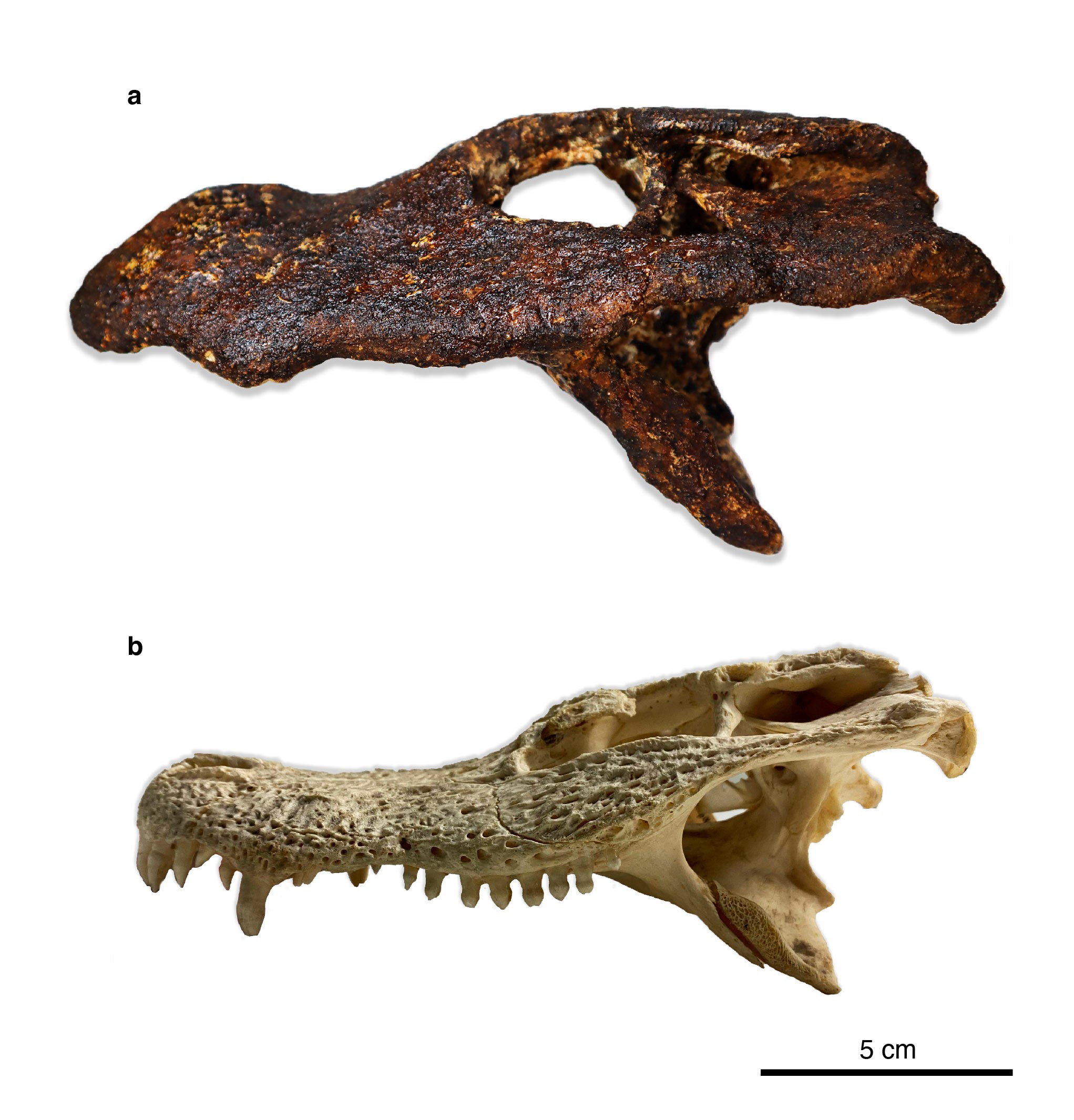Press Releases
13.07.2023
Chinese alligator had Asian relatives around 200,000 years ago
University of Tübingen researchers show fossil skull from Thailand belonged to a previously unknown species
University of Tübingen paleontologists Dr. Márton Rabi and Gustavo Darlim, working with Chulalongkorn University and Department of Mineral Resources of Thailand, have demonstrated that an almost completely fossilized alligator skull found in Thailand belongs to a previously unknown species. The fossil was discovered in 2005 and is at most 230,000 years old. The scientists named the newly-discovered species Alligator munensis after the Mun River, which flows near the site at Ban Si Liam where the skull was found. The research team hypothesizes that the species is an evolutionary offshoot from the Chinese alligator that still lives today. Their study has been published in the journal Scientific Reports.
The Chinese alligator (Alligator sinensis) is the only living member of the caiman and alligator family that occurs outside the Americas. "We compared the skull to both the Chinese and the American alligator as well as with fossils of four extinct alligator species," Rabi says. "The skull of A. munensis from Thailand is a little like that of a bulldog. It has some special features that are absent in all other species." The skull is large, the alligator possessed a short, very broad and deep snout, a reduced number of tooth sockets, and the nostrils were located far from the tip of the snout. The research team estimates the overall body length to be one and a half to two meters – similar to the Chinese alligator.
Evolutionary hypothesis
"The new species has the most similarities with the Chinese alligator," PhD candidate Gustavo Darlim says. Rabi and Darlim believe the two species are closely related and the researchers have developed a hypothesis that the two alligator species may have shared a common ancestor that lived in the lowlands of the Yangtze-Xi and Mekong-Chao Phraya river systems. They speculate that within the period of the uplift of the southeastern highlands of Tibet sometime between 23 to five million years ago, the separation of populations and eventually the evolution of two separate species occurred. While the Chinese alligator survived to the present day, Alligator munensis became extinct.
"The large tooth cavities in the skull of A. munensis indicate that it had large teeth in the back of its mouth that could be used to crush shells, such as snail shells," Rabi says. In the evolutionary past, he said, spherically flattened large teeth with a similar function were common in crocodilians – which include alligators – and such teeth evolved independently several times. However, such sets of teeth are not found in species living today, he says.
Part of a puzzle
Unlike its relative from the southeastern USA, Alligator mississippiensis, the Chinese alligator is threatened with extinction. Today it is only found along the lower Yangtze River. "How and when the alligators spread from North America to Asia is not known. Therefore, fossils from Asia are important to further piece together the puzzle," Darlim says. The discovery of the new species suggests that alligators were still widespread as far south as Thailand not more than about 200,000 years ago. It may therefore be possible to include areas outside China in a conservation program for the Chinese alligator.
Publication:
Gustavo Darlim, Kantapon Suraprasit, Yaowalak Chaimanee, Pannipa Tian, Chotima Yamee, Mana Rugbumrung, Adulwit Kaweera & Márton Rabi: An extinct deep snouted Alligator species from the Quaternary of Thailand and comments on the evolution of crushing dentition in alligatorids. Scientific Reports, https://doi.org/10.1038/s41598-023-36559-6
Contact:
Dr. Márton Rabi and Gustavo Darlim
University of Tübingen
Faculty of Science
Biogeology
Phone +49 7071 29-78930
marton.rabi@uni-tuebingen.de
gustavo.darlim-de-oliveira@uni-tuebingen.de
Contact for press:
Eberhard Karls Universität Tübingen
Public Relations Department
Dr. Karl Guido Rijkhoek
Director
Janna Eberhardt
Research Reporter
Phone +49 7071 29-76788
+49 7071 29-77853
Fax +49 7071 29-5566
karl.rijkhoek@uni-tuebingen.de
janna.eberhardt@uni-tuebingen.de
All press releases by the University of Tübingen

